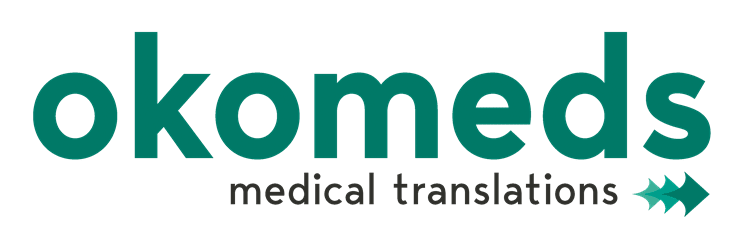
11 Oct A pharmaceutical companies dream: a cure for hypoactive sexual desire disorder
There is a widespread sexual dysfunction called hypoactive sexual desire disorder (HSDD), which means that the person experiencing it has lower concentrations of hormones, such as testosterone (when climacteric arrives), or neurotransmitters, such as serotonin (as in people with depression), resulting on a drop of sexual desire experience. Until now, pharmaceutical companies have not been able to synthesize a molecule that counteracts this dysfunction, despite their attempts. However there is always the placebo effect.
Globalisation has contributed towards rapid growth in the medical translation sector and it is said to be growing at a rate of over 5.5% annually. The reasons are diverse, from foreign holidays or business travel to significantly representative communities or even health tourism. Medical translation includes patient information leaflets, medical notes, website copy, documents brought by patients relating to their health or medication…
Aphrodisiacs and hypoactive sexual desire disorder
There are aphrodisiacs with central action, foods that contain substances that exert an effect on the body such as coffee (caffeine), tea (theophylline), or cocoa (or chocolate, theobromine) that stimulate the central nervous system. These foods or drinks produce, consumed in an adequate amount, an increase of certain neurotransmitters such as noradrenaline, which results in a decrease in fatigue and a greater state of alertness. Chocolate (or cocoa), in addition, is relevant due to its smell, as it contains phenylalanine, which favors the production of dopamine and the release of endorphins.
Alcohol is also included in the list of aphrodisiacs, although in this case, as a CNS depressant, it produces the inhibition of certain behavioral controls at the cerebral level, with the consequent greater disinhibition playing against the inhibited sexual desire (ISD). There is even talk of aphrodisiacs by excitation of other routes. In this case, it would no longer be about food, but about substances that can be perceived by other senses.
Medical interpreters, although facilitating face-to-face consultation or by phone or video also play an important role, especially in hospitals. Approaches may differ significantly from one healthcare provider to another as regards the need of medical translation or the way it should be provided. While the amount of written translation work in hospitals may be descending, clinical trials and pharmaceutical processes require large quantities of written medical translation.
12% of women and 5% of men are diagnose of hypoactive sexual desire disorder which requires lack of desire coupled with distress
Some patient numbers and medical translation
An estimated 30-39 % of women may have little or no interest in sex at any given time without personal problems or being diagnosed as a disorder. Diagnose requires lack of desire coupled with distress, that can be found in 12% of women and 5% of men (6% of younger men -ages 18-24, 41% of older men -ages 66-74 and 1.8% of men from 24 to 44). This problem often has a negative impact on the health and quality of life of the patient and can also be diagnosed as being situational.
Medical information available centrally in different languages is also increasing. Prices are more and more valued in the relationship between language professionals and healthcare providers, as there has been a tendency to withdraw direct involvement with interpreters and to outsource to medical translation services through procurement.
Scientists find different causes for the greater number of female HSDD cases. Such as, an approach to sexuality conditioned by long standing cultural tradition or a natural protective mechanism against having too many children. There are currently clinical trials been carried out related to the hypoactive sexual desire disorder and there are nonpharmacologic treatment options.
The pressure to keep prices down must not however compromise quality, accuracy, professionalism, timing… therefore, conditions, rates and experience should be balanced when engaging medical translation or medical interpreting services.

Are there any alternatives to nonpharmacologic treatment?
Foods ‘aphrodisiac’ have a vasodilatory function or are involved in a hormonal type process that can help promote sexual arousal. But they can be effective or not, depending on what the person who consumes them believes or thinks. Appropriate emotional conditions are needed for desire or sexual arousal to arise. And when these are accompanied by drinks or food, as in a romantic dinner, it is normal to make associations. In the same sense, if the consumption of some type of food or drink is associated with an intense sexual experience, surely that food will act for that person who performs the association as an aphrodisiac food.
In medical translations, technology is sometimes signaled as a way to cut costs and time, while maintaining standards. But, although Google Translate and similar tools are becoming more reliable and sophisticated, caution and double checking are a must in the medical translation sector. An ultimately wrong translation can have terrible consequences, as we can be talking of life and death. Professional translators use specialist translation tools that store terminology saving time and guaranteeing accuracy.
Among aphrodisiac-qualified foods there are aphrodisiacs by association -those foods that by their form resemble the male sexual organs (such as banana) or female (such as oysters)- or cultural aphrodisiacs -those foods that are traditionally considered aphrodisiac (such as seafood in general, ginseng, ginger, cinnamon, ginkgo biloba, honey, maca or chili)-.
Seafoods are rich in zinc, which helps the human body to produce testosterone. In addition, due to the high price, their consumption is culturally related to luxury and ostentation of power.
Professional translators are needed to make accurate assessments and facilitate appropriate decisions in a field such as this, in which clinical trials are still to come. Machine translation will continue to improve and pharmaceutical companies might finally achieve their dream, finding a cure for hypoactive sexual desire disorder.






Sorry, the comment form is closed at this time.